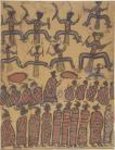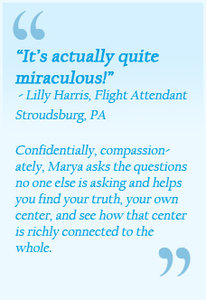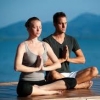Arvol Looking Horse, Sweat Lodges, & the Power of Knowing Yourself

KONA, HI ~ When I was invited to do a sweat lodge with Lakota friends 20 years ago in Colorado, hefty black rocks were heated for several hours before the ceremony began. The steaming rocks were placed inside the lodge before participants entered in a clockwise direction, the lodge flap was closed, and the leader began praying and singing ancient songs while splashing water, cedar, and other herbs on the glowing rocks.
As the temperature rose, the heat and claustrophobia began to gnaw at my organs. We were reminded to drink water continuously to prevent dehydration and the sweat lodge door was opened four times during the ceremony, each time representing one of the four directions. When the door was opened, we were told, prayers were released and fresh air entered to rejuvenate us.
If we felt the sweat was becoming too hot for us, we were encouraged to exit the lodge and re-enter when another round was about to begin. Raising of heat in traditional ceremonies is a revered healing practice, and there is no reason to consider this ancient sacred rite dangerous unhealthy for most people. That said, something went terribly wrong in Sedona last week.
My heart goes out to the leader Mr. James Arthur Ray and the families of three people who died after attending the sweat lodge portion of Ray’s Creating Harmonic Wealth Retreat in Sedona. It has sent shock waves through the Native, holistic health, and spiritual communities. While no one knows yet for certain what went wrong, Joseph Bruchac, author of “The Native American Sweat Lodge: History and Legends,” called the number of participants in the lodge “appalling.” Most accounts report that 55-65 people were in the dome-like structure, which had a round pit dug into the center of the floor to contain the heated volcanic rocks.
“If you put people in a restrictive, airtight structure, you are going to use up all oxygen,” Mr. Bruchac said Saturday from his home in Saratoga Springs, N.Y. “And if you’re doing a sweat, you’re going to use it up that much faster.”
American Indian sweat lodges typically hold about 12 people and are covered with blankets made of natural materials, such as cotton or wool, and the air flow isn’t restricted. “I don’t see how the person running that lodge could have been aware of the health and well-being of that many people,” he said.
The participants had fasted for 36 hours as part of a personal and spiritual quest in the wilderness, then ate a breakfast buffet Thursday morning. After various seminars, they entered the sweat lodge lightly dressed at 3 p.m.
Two hours later, a woman dialed 911 to say that two people, 38-year old New Yorker Kirby Brown and 40-year-old James Shore of Milwaukee, did not have a pulse and weren’t breathing. According to a family spokesperson, Brown was an avid surfer and hiker who was “in top shape,” before the mysterious sweat lodge death.”
Apparently, the leader could not be aware of every person’s condition, which reminds us that we are responsible for ourselves. No matter who a teacher or leader of any ritual, ceremony, or event is, we need to be aware of our own bodies, set healthy boundaries, and say, “No, thank you,” when we feel pushed or persuaded to fulfill someone’s else’s idea of what’s good for us.
Much can be said for pushing oneself beyond perceived limits. You could say there are limits to our limits! Good teachers, doctors, healers, and artists can help us push beyond them, but the kind of health and sanity I want for myself, my family, my students, clients, and friends comes from listening to our own bodies, taking counsel with our own body and soul, and making wise, balanced choices.
While the mass media reported “Spiritual Retreat Homicides” and pulled no punches in sneering at the “New Age” as they tend to do, the Native response has been restrained but clear.”
“I am concerned for the two (three) deaths and illnesses of the many people that participated in the sweat lodge in Sedona, Arizona,” said Arvol Looking Horse, a 19th-generation keeper of the sacred White Buffalo Calf Pipe, “That brought our sacred rite under fire in the news. I would like to clarify that this lodge and many others, are not our ceremonial way of life. My prayers go out for their families and loved ones for their loss.”
In 2006, Looking Horse received the Juliet Hollister Award for promoting peace and interfaith and secular understanding by the Temple of Understanding, joining past recipients Nelson Mandela, Ravi Shankar and the Dalai Lama.
Looking Horse says that while non-Native people have a right to seek help from First Nations intercessors, traditional Native sweats are spiritual and the idea of charging for them is anathema. “It appears that once again greed interfered with common sense,” read an editorial in the Buffalo Post.
The “so-called” sweat, was part of a five-day retreat costing each person almost $10,000, bringing nearly $600,000 into Mr. Ray’s organization. After the tragic events, with nearly 20 of his students and followers still in the hospital, Mr. Ray apparently left on a plane for California, making it hard to believe he was more interested in their spiritual awakening than their money.
The happy ending to this story is that we are reminded of the power of knowing ourselves. We are at choice in every moment of life, and making the right choices may well be a matter of life or death.


